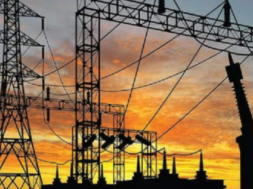
Electricity: As summer bites, power crisis across states worries the Centre
Virendra Pandit
New Delhi: While the Prime Minister was away on his three-nation official tour of Europe, Home Minister Amit Shah held an emergency meeting with ministers concerned with coal, railway, and energy; as soon as Narendra Modi returned, his first engagement in the national capital was a meeting on the heatwave that has pushed India’s heavily coal-based power sector in a multi-state crisis.
To rush coal to the starving power plants in many states, the Railway Ministry had recently canceled 657 trains to clear the tracks for faster movement of coal wagons. Logistics snarls, including a lack of railway carriages to transport the fuel from mines to power plants, also exacerbated the shortages.
Last year, late and heavy monsoon rains triggered a power crisis in some states causing widespread electricity curbs. The delayed rains flooded the coal mines and roads which hampered production and shipments for weeks.
“If coal stockpiles continue to deplete at this rate, we’re going to see a full-blown power crisis across the country,” said Shailendra Dubey, chairman at the All India Power Engineers Federation, an advocacy body that produces energy policy suggestions, the media reported on Thursday.
Coal dominates over 70 percent of the power sector in India; gas-fired power generation plants account for less than five percent of electricity production.
The sweltering heat and sudden rise in temperatures, up to 46 degrees Celsius (115 degrees Fahrenheit) in April itself, took even the India Meteorological Department (IMD) by surprise. The heatwave, that came from Pakistan to north-western India, broke over 120-year-old records. Because of increased demand and depleted supplies, coal stockpiles shrunk at power plants. Fuel imports also faltered on prices surging since the Russian invasion of Ukraine started on February 24.
In 2021, an electricity crisis surfaced in the second quarter of 2021-22 (July-September) because of the delayed evacuation of coal. No coal-fired power generating plant can stock this fossil fuel beyond a few weeks and keeps it replenished continuously. They had to use up stocks until they could replenish them again by the third or fourth quarter.
In contrast, summer arrived early this year and broke all April records with peak temperatures soaring above 45 degrees at several places. The heatwave immensely pressured the power sector as demand multiplied manifold for domestic and industrial use amid a post-pandemic spike in economic activity.
This power crisis is likely to continue in the coming weeks as summer advances in the next couple of months. Several states are facing hours-long blackouts, and have been forced to halt manufacturing lines at some places.
According to the media reports, electricity outages and curbs have spread across over half of all states, and the nation’s coal-dominated energy system is expected to come under further strain as power demand soars in the coming weeks. Production of coal failed to keep pace with unprecedented energy demand from the April heatwave and the country’s post-pandemic industrial revival.
How serious is the electricity crisis?
On Wednesday, the Reserve Bank of India (RBI) suddenly spiked repo rates as high coal and oil prices threatened to add to inflationary pressures. Power curbs may also hit India’s already faltering rebound in industrial production.
According to reports, stockpiles at coal-fired power stations tumbled over 14 percent since the start of April, leaving about 100 plants with critically low supply levels. Coal reserves may shrink further on high demand until June when the monsoon rains start in southern India.
Electricity demand hit a record 207.1 gigawatts on Friday last week and may rise to 220 gigawatts within the next two months, officials said.
Average spot power prices at Indian Energy Exchange jumped to about Rs 10 per unit (a kilowatt per hour), almost triple the average in January, capped by the industry regulator.
About 16 of India’s 28 states have been grappling with power outages of between two and 10 hours a day. Rajasthan, a hub for metal smelters to textile factories, last week ordered power cuts to some industries by half. Citizens should limit their use of appliances like air conditioners and coolers in homes and workplaces, Chief Minister Ashok Gehlot said, the media reported.
Maharashtra is also battling worsening blackouts and industries may cut production and turn down export and domestic orders.
In Punjab, India’s top grains producer, angry farmers blockaded roads demanding at least eight hours of power a day for agricultural use as they await the paddy-sowing season in June.
Even in the coal mining states like Jharkhand and Chhattisgarh, many industries are cutting output or running backup generators with expensive diesel. “If we have to operate like this, we’ll all soon be in the red,” said Philip Mathew, President of Jharkhand Small Industries Association.
Similar reports of power cuts and protests have come from states like Jammu and Kashmir, Uttar Pradesh, Karnataka, and Kerala.














